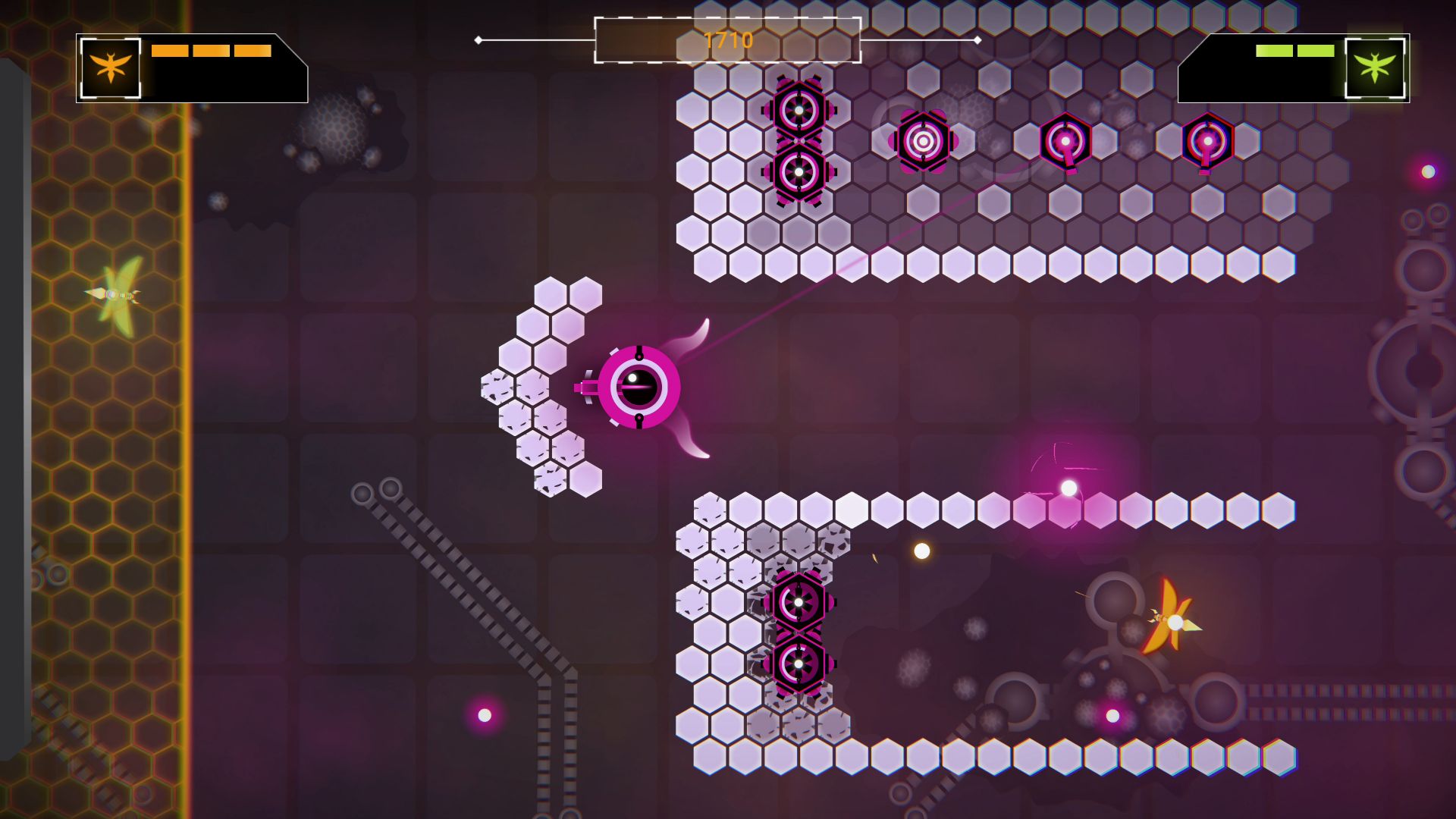Atari and AdamVision Studios have spent the last few years producing modern “Recharged” versions of classic Atari games. Yars: Recharged is a new but faithful sequel to Yars’ Revenge, the Atari 2600 shoot ‘em up from 1982. This one casts one or two local players as the insect-like Yars who must shoot and bite their way through an army of evil aliens in an attempt to save their species from extinction. Whether or not you’ve played the original game, Yars: Recharged is a fun and addictive shooter.
To understand how Yars: Recharged builds on its predecessor, we must first know how the original game works. Many of our readers won’t have played the 1982 game that started it all, but Yars’ Revenge is included in the recent Atari 50 compilation, so it’s actually convenient to try on modern hardware. Atari 50 also features Yars’ Revenge Enhanced, an exclusive, direct remake of the first game but with prettier graphics. It’s a small game, nowhere near as robust as Yars: Recharged.

Yars' Revenge (left) and Yars' Revenge Enhanced (right)
Anyway, in Yars’ Revenge, players start on the left side of the screen and face off against the enemy Qotile on the right side. The Qotile is protected by a shield/wall (not shown in the screen above due to flickering) that can be chipped away by player attacks. In the middle of the screen, a "glitch shield" protects the player from fire but also prevents firing. The Yar can nibble away at the Qotile’s shield, eventually charging up the powerful “Zorlon cannon” on the left side of the screen. Once the cannon is charged, the fire button causes it to fire a blast that will hopefully destroy the Qotile. The game then proceeds to the next level, although the original game has only two level layouts. It’s a creative and impressive game for the time and hardware.
Yars: Recharged shares a lot in common with its forefather, although the game is now a twin-stick shooter. The players’ insectoid Yars can still bite enemy shields (and the new turrets). Biting does more damage than regular shots, but it carries tremendously greater risk since it puts you so close to the foe. The glitch shield now only appears when the Zorlon cannon has been summoned. Hazards have increased exponentially, as the Qotile core (or more often, cores) is now protected by multiple types of turrets. These fire periodically, but they can usually be munched on for a while before they shoot again. When destroyed, turrets drop various power-ups that briefly increase the Yars’ ranged firepower.
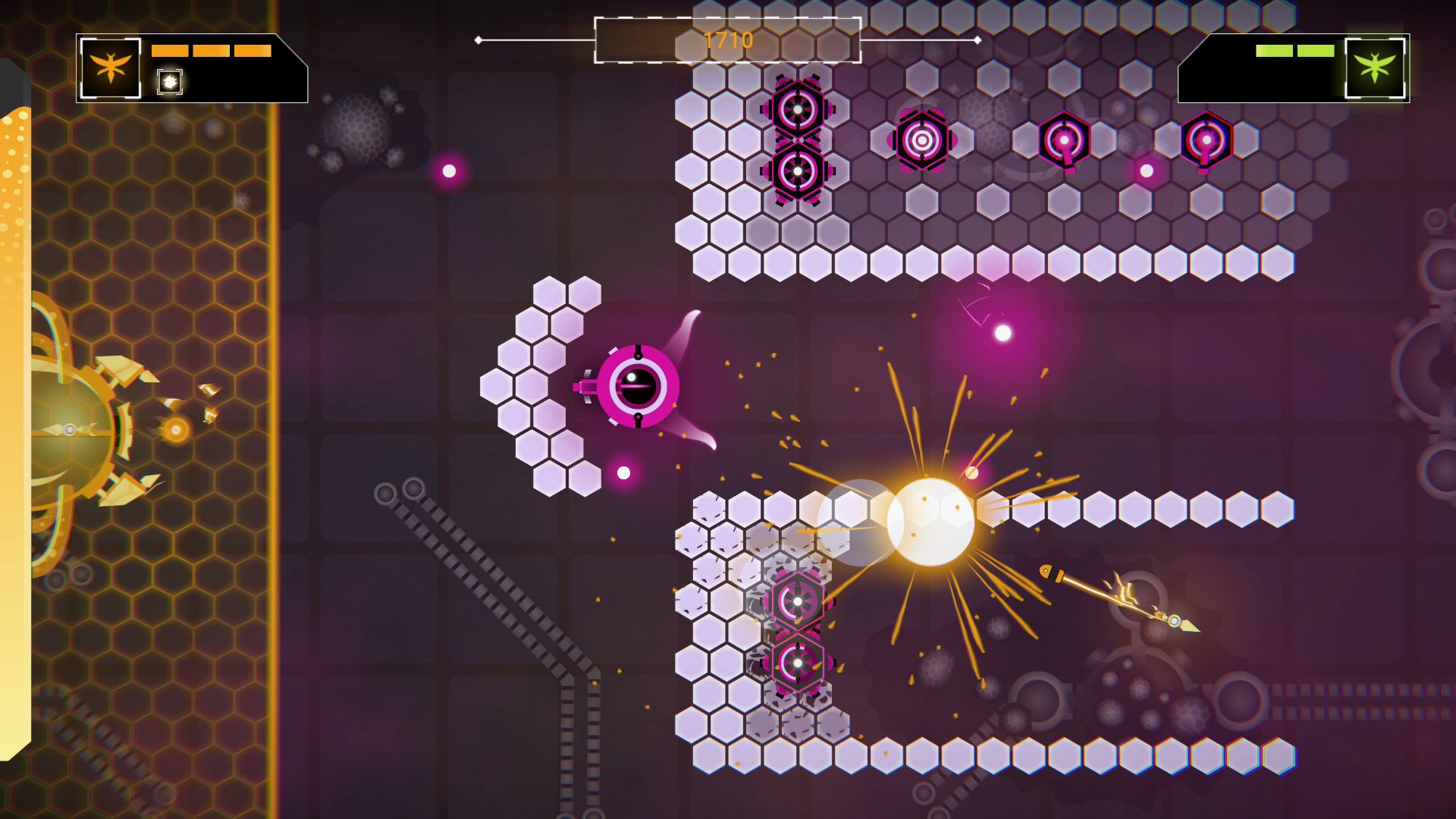
The Zorlon cannon in action
Qotile cores represent the greatest threat in each level and the ultimate goal. Cores periodically make a telltale sound and then fire a blast that will instantly kill the player (regular enemy fire only depletes the health bar). The goal is to eliminate the shields from around the Qotile cores, build up enough power to summon the Zorlon cannon, and then use it to damage and destroy the cores. The cannon works differently than before – players actually hop in and aim it, a much less unwieldy method than in the original. The cannon gets two shots at full strength – enough to kill some cores if you don’t miss, though later cores have more health. It’s easy to miss because of distance and the cores’ tendency to move around in later levels, plus the canon’s energy constantly depletes, creating a hectic sense of urgency.
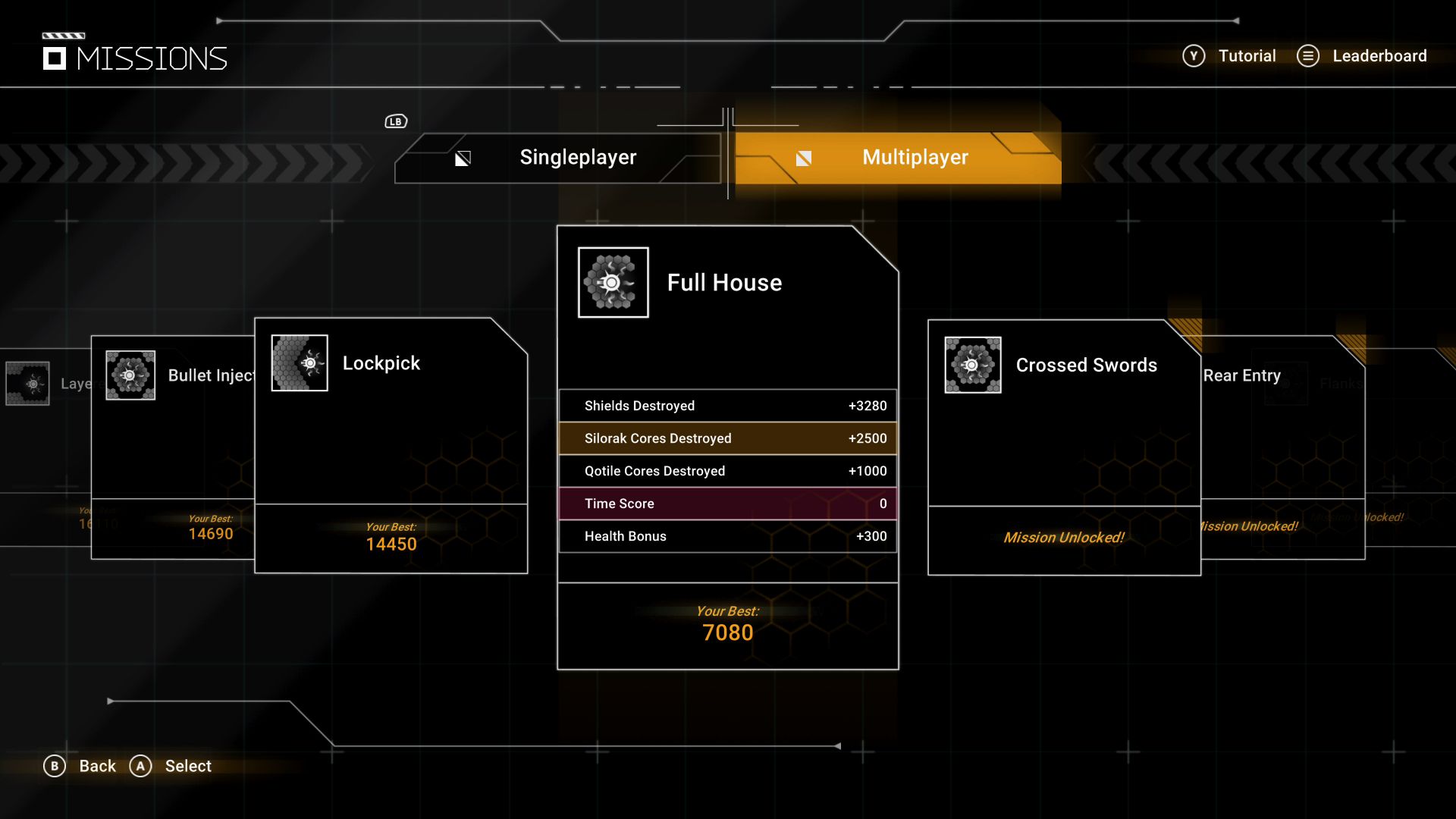
The game features two modes: Arcade and Missions. Arcade is a challenging progression through 30 levels on a single credit. Missions consists of 30 unlockable missions that can be played individually. Scores earned in each mission contribute to a global leaderboard for the mode, encouraging players to replay every level in order to boost the overall score.
Both Arcade and Missions can be played in 2-player local co-op. Surprisingly, multiplayer progression in Missions mode is separate from single-player progression, though the levels themselves are the same. Co-op certainly makes the game a bit easier and allows new strategies for approaching each level – should you divide and conquer or double up on targets? The team will also need to decide who gets to fire the Zorlon cannon, which is a one-seater. A big advantage to co-op in Arcade mode is that if one player dies and the other completes the level, the dead player gets revived at the next level.
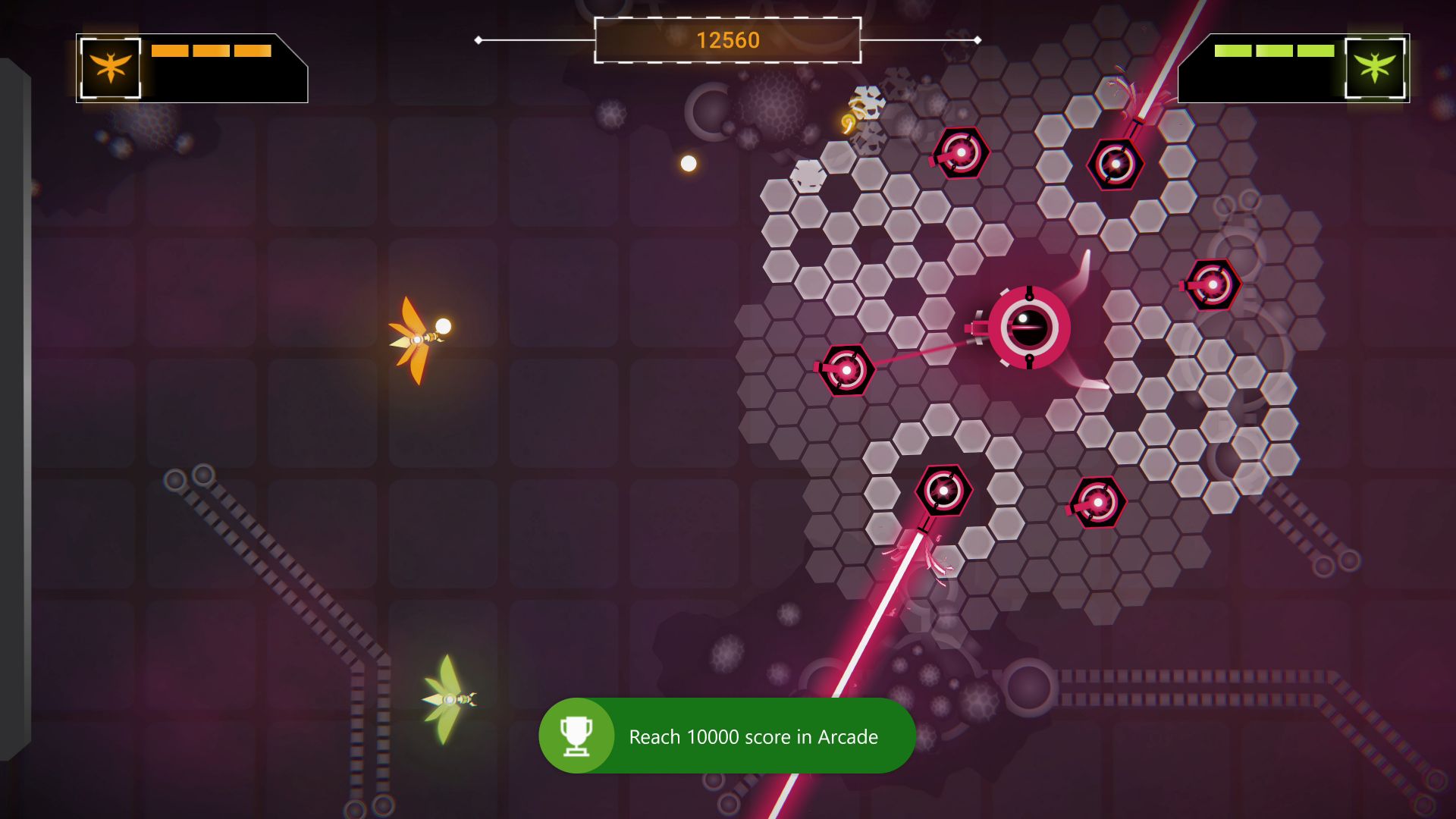
Yars: Recharged starts out easy and then gets tougher as the volume of bullets and number of Qotile cannons increases, to say nothing of the complex shield patterns employed by late-game enemies. The difficulty can be frustrating at times, but it’s mostly doable, especially in Missions mode where you can move on to another unlocked level if one gets too troublesome.
Production values are a bit hit and miss here. The hexagon-heavy visuals fit the insectoid theme well, but they still become repetitive after a few levels. More variety in colors might’ve helped. The music, ostensibly composed by the talented Megan McDuffee, is surprisingly disappointing. The way the game’s audio is mixed, you can barely hear the music over the sound effects. The sound effects themselves are thumping, to be sure, but there might as well not be any music during levels. Turning the sound effects down carries the risk of missing the sounds that warn of impending enemy fire, so it’s a risky move.
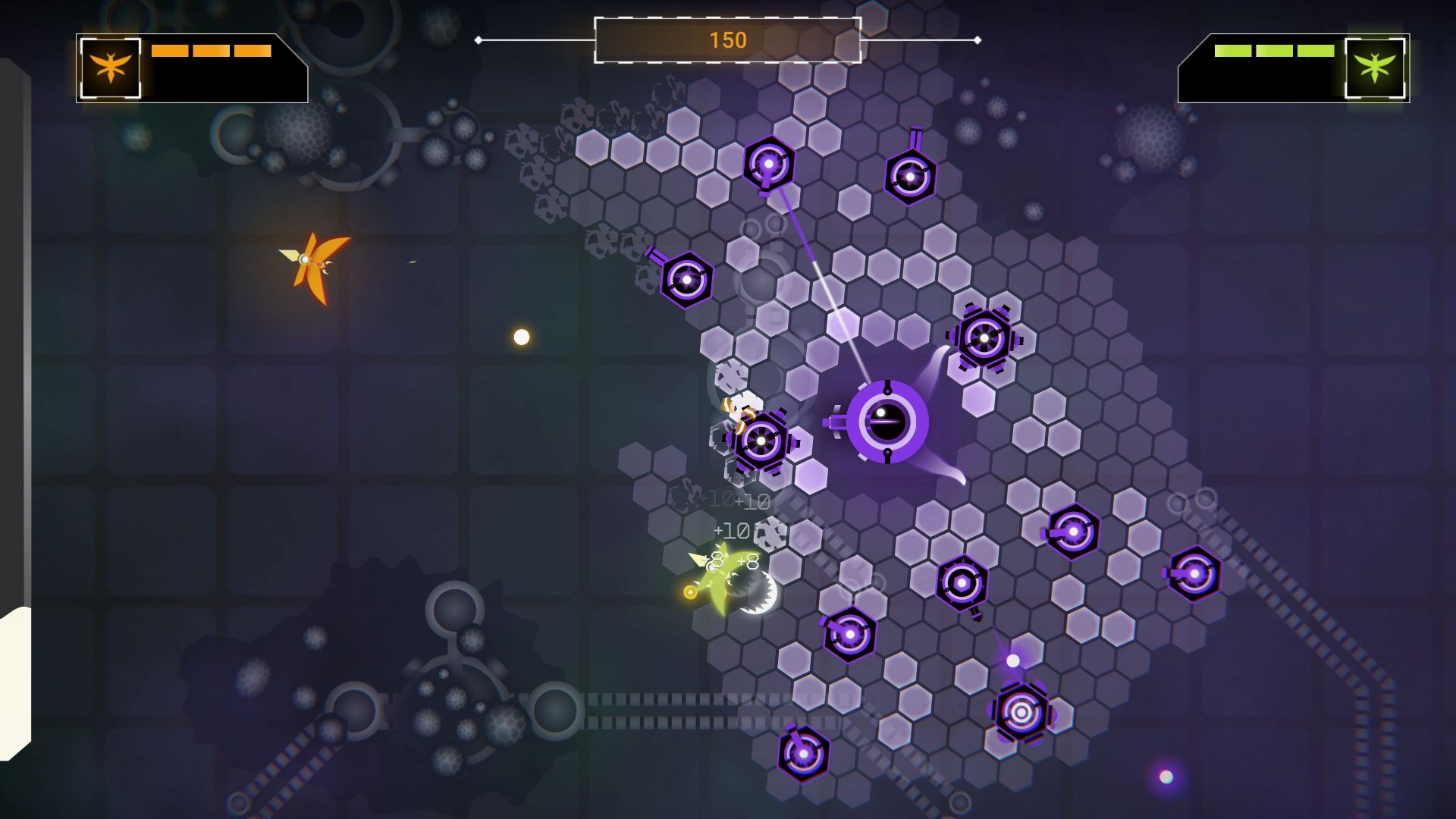
The Xbox 360 and PlayStation 3 era saw a period of new versions and sequels to classic games. Some fared better than others – the Xbox 360/Steam Yar’s Revenge (note the different location of the apostrophe) from 2011 is a weird rail shooter that plays nothing like the original game. Yars: Recharged, on the other hand, actually takes the simple design of the Atari 2600 game and builds it out into a bigger, deeper, and infinitely more enjoyable game. This modern game is the good style of 360-era reboot, and it even sells at a period appropriate price to boot! Even if you’ve never revenged a Yar before, as long as you like shoot ‘em ups, Yars: Recharged is a terrific buy.
Get Yars: Recharged for $9.99 on Xbox, PlayStation, Switch, Steam, and Epic. The Steam version is fully Steam Deck compatible.
An Xbox code was provided by the publisher for this review.
Verdict
Co-Op Score
Overall
The Co-Op Experience: Arcade and Mission Modes support local co-op. While both players work together to destroy the cores during each level, only one player can use the Zorlon cannon at a time. In Arcade, if one player dies during a level, that player will be revived if the other player completes the level. Co-op progression in Mission Mode is separate from single-player progression.
Co-Optimus game reviews focus on the cooperative experience of a game, our final score graphic represents this experience along with an average score for the game overall. For an explanation of our scores please check our Review Score Explanation Guide.
